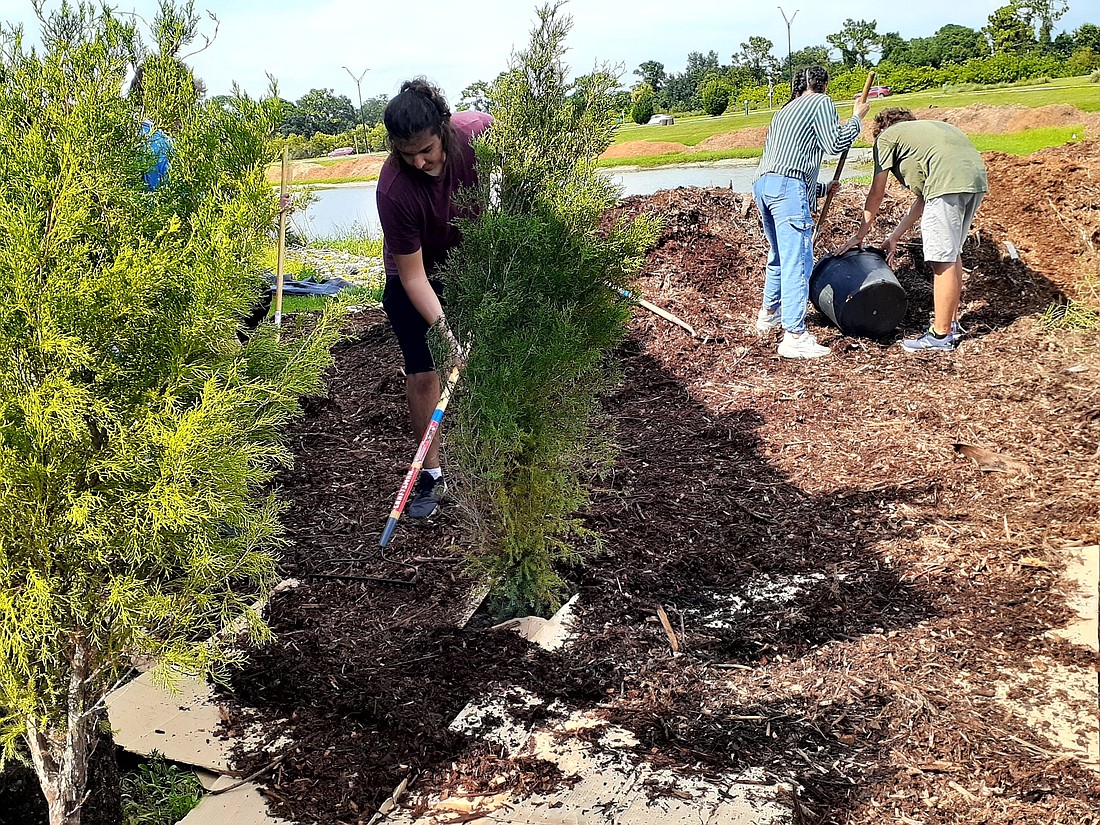- January 15, 2025
-
-
Loading

Loading

Most students spend their summer breaks relaxing on the beach, but one group of high school and college students spent their break building a forest.
Summer interns at the Faulhaber Fab Lab, in partnership with SURF — an organization comprised of Florida Veterans for Common Sense Fund, Rotary Club of Sarasota Bay and Solutions to Avoid Red Tide — are working to design and plant a microforest at Nathan Benderson Park.
The microforest, made up of more than 50 types of native plant life, will help filter runoff and prevent harmful nutrients from entering waterways. This, in turn, will keep nutrients that can intensify red tide out of the bay.
Twenty student volunteers are working in groups to design the park, choose which plants will work best, create informational signs and promote the team’s efforts on social media.
The students are part of the lab’s Suncoast Science Center’s Student Community Innovation Program, which launched last year. Each year, the students get to work on a community-focused project.
In the summer of 2020, SCIP students created a kid-friendly website to teach students about COVID-19 and proper safety measures.
Students are now working with SURF on the second microforest in Sarasota County. The first was planted at Celery Fields.
Throughout the summer, the students spent 100 hours working on the project.
“It’s amazing to see how dedicated the students are,” Mimi Faulhaber, an advisor for the project, said. “From day one, they’ve come in here and gotten right to work, and it’s a really great to see them be so passionate about the climate and leaving a positive impact.”
Microforests were first popularized by a Japanese engineer named Akira Miyawaki. The method involves planting two to four trees in about 10-square-feet of space.
The forests can help lower temperatures of the ground, reduce air pollution, attract local wildlife and create a carbon sink. They also capture and filter water runoff so it doesn’t enter waterways.
Project manager Charles Reith said it’s exciting to see a younger generation get involved with climate efforts because it is one of the most important issues the world faces.
“Climate is now not a cutting edge problem, it is the existential crisis that underpins the quality of life for humans,” Reith said. “If we don’t solve it, people are going to really suffer. But these kids get that and they want to help.”
Aside from the climate benefits, the students are designing the forest so that visitors to Nathan Benderson Park can walk through it and learn about the forest, how it is helping the environment and native plants that they could use to help the environment in their homes.
The microforest is planted on a small strip of land close to wear rowers launch into the water.
Currently, the plant life will need periodic care. However, the goal is that the forest will be completely self-sustaining in three years.
Throughout their work, students are paired with industry professionals to help guide their research and efforts. Krystal Tran, a rising junior and member of the communications team, said the program has helped her interest in communications grow.
“I”m learning a lot of things that I never knew how to do before,” Tran said. “The things I’m learning I can take with me after the project and use for the rest of my life, which I think will be helpful when I have a professional career.”
Sahil Agarwal, a rising senior and member of the engineering team, said it was great to not only get real-life experience on the project, but to also build something that will impact Sarasota for generations to come.
“We all worked on this for one summer, but it’s going to sit there for 20, 30, 40 years,” Agarwal said. “We can come back later and look. It’s really cool to think about how we built something that thousands of people will benefit from.”